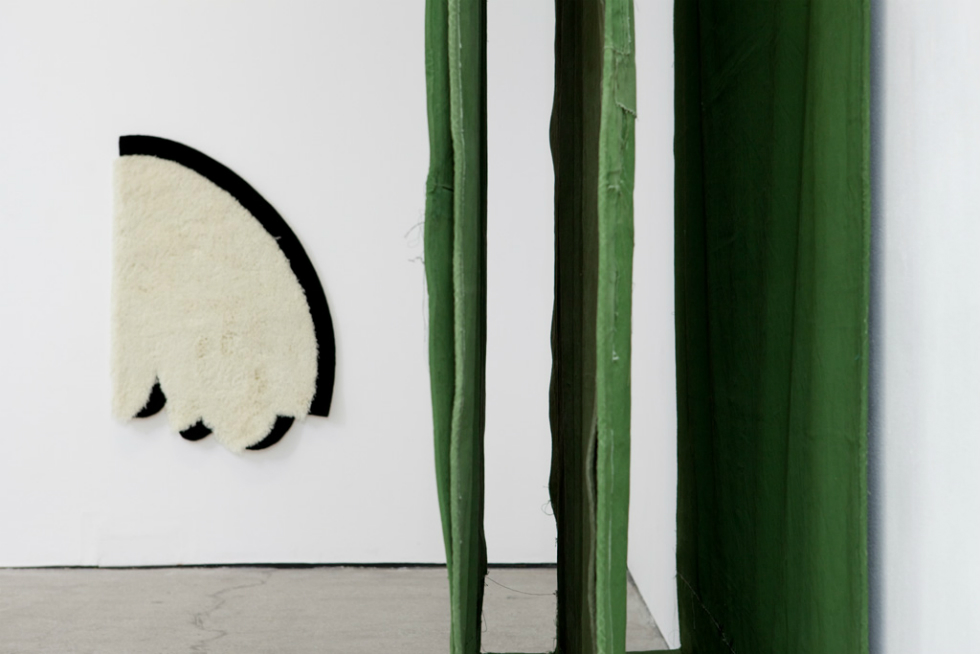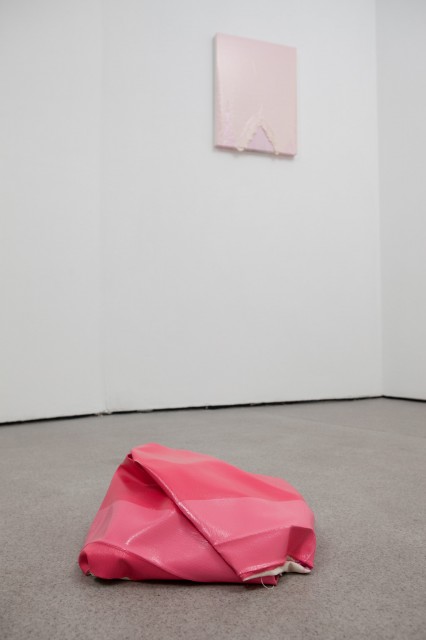Paint, Activated: Castlefield Gallery’s Real Painting — Reviewed

On visiting Castlefield’s new show, Daniel McMillan finds artists that shed the illusory surface of painting in favour of the actuality of the ‘stuff’ from which it is comprised…
“One must remember that writing on art replaces presence by absence by substituting the abstraction of language for the real thing”
– Robert Smithson, Incidents of Mirror-Travel in the Yucatan (1969)
According to the press release, Castlefield Gallery’s new exhibition, Real Painting, considers ‘not necessarily what a painting means but what it does’. This is problematic, particularly for your casual arts reviewer: for to discuss what a painting ‘does’ is to translate a kind of language – a nonverbal exchange between artist, material and viewer.
The exhibition, a selection of works by national and international artists curated by contributing artists Deb Covell and Jo McGonigal, sheds the illusory surface of painting in favour of the actuality of the ‘stuff’ from which it is comprised. Painting’s capacity for signification, beyond signifying itself, is left behind. What then can the works which make up Real Painting be said to ‘do’?
Firstly, they can be said to allude to the activity of painting and to the activity of paint, painting (v.). On a sheet of MDF on a wall in the upper floor of the gallery, a dollop of bubblegum pink gloss paint has been encouraged to spread, drip and wrinkle by being re-hung at various stages of its congealment (Alexis Harding, Hood (2012)). Gravity and time have been allowed to play a part in the formation of the pictorial.
Finbar Ward’s Untitled (2014), a work which appears to be composed of detritus from the artist’s studio bin, can be ‘read’ as a reflection on the interminable act of ‘doing’ painting. Traditionally, the act of painting could be understood as having an endpoint because it had a goal. It was finished when whatever was being depicted was rendered in paint on a flat surface. In leaving behind the representational image, painting can thus never reach a point of completion. The question here is not: ‘what does a painting do?’, but: ‘when is a painting done?’.

In referencing nothing beyond themselves, the works in Real Painting are secondly resigned to reference Painting (n.). Because they shun the static picture plane, it is inevitable that, within an art historical context, the real paintings will be discussed within the lineage of Modernist Abstraction.
A ‘practice’ founded on an understanding of painting as an entity that exists in the real world can be traced back to the early 20th century – to the Russian Avant-Garde and to the Constructivist concepts of Faktura (materiality) and Tektonika (the space material occupies). Where the work in Real Painting differs is in the contributing artists rejection of the notion that a painting has any real world use.
In Painting qua painting, the accompanying essay commissioned by the gallery, Craig Staff (Reader in Fine Art at The University of Northampton) refers to the practice and writings of Post-Minimalist Richard Tuttle as some kind of art world landmark towards which the works in the exhibition are drawn. ‘It is however an estimable fact than an artwork exists in its own reality,’ Tuttle writes, ‘and in that exists a certain cause and effect pattern which has baffled the ancients as well as myself.’
The idea that an artwork exists independently of the world is easily disproved, but it is a particularly obsolete concept within the context of this exhibition – for, if we are to believe the exhibition title, the work requires us to view it as ‘real’ material, created and located in the world, or as much of the ‘world’ as a contemporary art gallery in Manchester can be said to resemble.
I am thinking in particular of Deb Covell’s Nowt to Summat (2014), a sheet of dried acrylic paint which hangs from a rail attached to the ceiling of the lower gallery, and Angela de la Cruz’s Compressed 1 (White) (2010), an aluminum wall piece which looks like a heavily discounted defect purchased from a Donald Judd factory shop. The space around these works is as important as as their surface. We can’t ‘read’ them — the objects require us to approach them from a position of disinterest, to move around them and let them do their work.
Here I am, getting at the effect of painting, or better put the sensation of viewing it. To translate this language is to become an interpreter to a dialogue which defies translation. Art world copywriters use clumsy ‘tensions’ between an endless list of dichotomies, most of which can reduced to the same nothing/something, as a stand in for this exchange. Painting, alone, ‘does’ nothing. It acts when activated. In the context of a review, perhaps all one can say is attend and let the works ‘do’.
Daniel McMillan
See Real Painting at Castlefield Gallery, Manchester, until 2 August 2015 — free entry
This article has been commissioned by the Contemporary Visual Arts Network North West (CVAN NW), as part of a regional critical writing development programme, supported by the National Lottery through Arts Council England — see more here #writecritical





